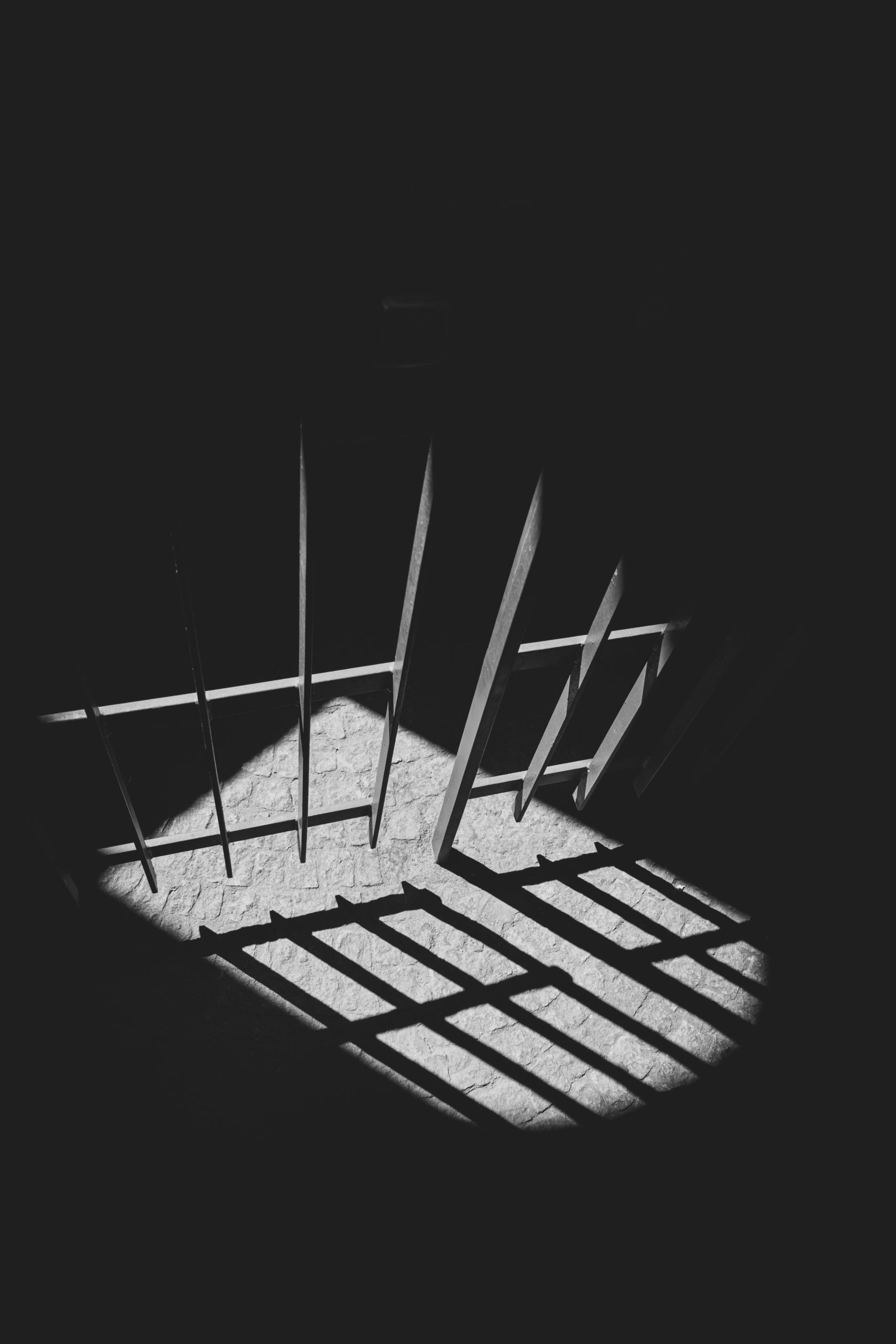
Punishing someone who has done something wrong seems natural in a just society. We cannot allow that person to continue to cause damages for the sake of our community. While jail is currently the most popular means of punishment, alternative options are being considered. Today, we will focus on one of these: the restorative justice system.
Punishing someone who has done something wrong seems natural in a just society. We cannot allow that person to continue to cause damages for the sake of our community. While jail is currently the most popular means of punishment, alternative options are being considered. Today, we will focus on one of these: the restorative justice system.
When you hear the word “criminal offense”, the first thing that springs to mind is prison. A person that has violated the rules we have in a functioning society, namely laws, should have to pay for it; that is probably a thing most of us agree on. But let’s be honest here: no one thinks of a prison cell as a pleasant place to be. Not only is your freedom taken away, but other dangers like elevated health risks, assault and poor living conditions contribute to this disastrous living situation. The Vera Institute of Justice recently reported a lack of fresh air, healthy food, natural light, proper health care, and connection to loved ones in prisons (2021). Studies have also shown that harsh living conditions can increase post-release criminal activity (Drago et al, 2011). The question arises if those prison cells are the right place to learn remorse and practice self-reflection to achieve the inmates regretting their actions and, ideally, not doing them again. Following concerns on recidivism numbers, different approaches are offered instead of incarceration. One of those approaches is the restorative justice system.
Everyone can probably remember being called to the teacher after class and “talking it out” in school or that awkward and forced “sorry I took away your toys” in kindergarten. Those descriptions are also familiar to descriptions of restorative justice: face-to-face encountering of victim and offender (even though the incidents talked about here are obviously on a different level than “grown-up” crimes) and making everyone part of the punishment-process. Most definitions of restorative justice see crime in terms of harm to the individual and the community rather than a violation of laws. The goal is to make everyone, offender as well as victim and sometimes the impacted community, part of the “reparation process”(Albrecht, 2011). Mostly, this involves a face-to-face encounter of the offender and the victim based on voluntariness and truth-telling. This might sound brutal at first but isn’t that the ultimate form of self-reflection? To look at yourself by meeting and talking to the people in front of you – these people who are now not merely people but, through your actions and decisions, victims?
While support from the general public for the “more reconciliation, less punishment” approach is progressively rising (Roberts and Stalans, 2004), the exact execution of the theory has shown some challenges and limitations. The restorative justice system has not been institutionalized in any one country but rather there have been pilot studies and smaller programs over the years integrating it into their existing justice system. Since there are so many separate realizations of the concept worldwide, every program differs at least a little bit from the other. Some examples include offending behavior programs, victim awareness programs, community service work and victim-offender mediation (Dhami et al., 2009). There is still a very wide scope of what the definition could and should entail and how to implement it in practice is very much up for discussion. Now these projects have been researched (and often do show success but also challenges that have to be tackled), but because of their differences, efficacy and utility is often hard to assess and compare (Wood and Suzuki, 2016).
“Most definitions of restorative justice see crime in terms of harm to the individual and the community rather than a violation of laws.”
Another problem is that victim-offender meetings, even though supervised and led by a mediator, are not always as helpful and satisfying for the participants as the theory imagines it to be. Offenders may not always show the empathy and understanding for their own actions the victim would wish to receive, may it be because of antisocial traits (which are more common in prison population than in the general population) or a history of difficult family and peer relationships (Albrecht, 2011). Hence, the victims often feel like this practice benefits the offender more than themselves which shows a discrepancy between theory and practice since this approach was also hypothesized to be more victim focused (Dhami et al., 2009).
When comparing the restorative justice system to the currently prominent justice system, which is based largely on retribution, it becomes obvious that difficulties will arise when trying to integrate programs of one system into the other. Restorative justice is naturally contradictory to our prison system since it wants to connect prisoners with the community and the approach now is to keep them away and protect the general population from prison inmates (Dhami et al., 2009). Smaller programs have shown that some prisoners showed more empathy after the intervention and participants were pleased with the results of the face-to-face meetings (Devroey, 2003; cited in Dhami et al., 2009) but to grasp the real impact this approach can possibly have in terms of recovery, resocialization and recidivism, more resources have to be invested into institutionalizing it.
“Restorative justice is naturally contradictory to our prison system since it wants to connect prisoners with the community and the approach now is to keep them away and protect the general population from prison inmates (Dhami et al., 2009).”
Overall, it can be seen that the theory sounds fascinating and is supported by more and more people but still,the implementation of it has uncovered some difficulties. Even though the broad definition of the concept was listed as a weakness before, precisely that could give us more possibilities to try out different programs and projects, change it around and account for the various outcomings that have been identified. Personally, I do think that this idea is leading us in the right direction, further away from prisons that are focused on retribution and punishment and toward a focus on reflection and bettering. As the Norwegian prison director Are Hoidel once said: “Do you want people who are angry – or people who are rehabilitated?” (Business Insider, 2014)
References
– Albrecht, B. (2011). The limits of restorative justice in prison. Peace Review, 23(3), 327-334.
– Dhami, M. K., Mantle, G., & Fox, D. (2009). Restorative justice in prisons. Contemporary justice review, 12(4), 433-448.
– Drago, F., Galbiati, R., & Vertova, P. (2011). Prison conditions and recidivism. American law and economics review, 13(1), 103-130.
– Guidoni, O. V. (2003). The ambivalences of restorative justice: Some reflections on an Italian prison project. Contemporary Justice Review, 6(1), 55-68.
– Roberts, J. V., & Stalans, L. J. (2004). Restorative sentencing: Exploring the views of the public. Social Justice Research, 17(3), 315-334.
– https://www.vera.org/dignity-behind-bars/living-conditions-in-prison, accessed on 02.11.2022
– Wood, W. R., & Suzuki, M. (2016). Four challenges in the future of restorative justice. Victims & Offenders, 11(1), 149-172.
– Why Norway’s prison system is so successful, Business Insider, 2014
When you hear the word “criminal offense”, the first thing that springs to mind is prison. A person that has violated the rules we have in a functioning society, namely laws, should have to pay for it; that is probably a thing most of us agree on. But let’s be honest here: no one thinks of a prison cell as a pleasant place to be. Not only is your freedom taken away, but other dangers like elevated health risks, assault and poor living conditions contribute to this disastrous living situation. The Vera Institute of Justice recently reported a lack of fresh air, healthy food, natural light, proper health care, and connection to loved ones in prisons (2021). Studies have also shown that harsh living conditions can increase post-release criminal activity (Drago et al, 2011). The question arises if those prison cells are the right place to learn remorse and practice self-reflection to achieve the inmates regretting their actions and, ideally, not doing them again. Following concerns on recidivism numbers, different approaches are offered instead of incarceration. One of those approaches is the restorative justice system.
Everyone can probably remember being called to the teacher after class and “talking it out” in school or that awkward and forced “sorry I took away your toys” in kindergarten. Those descriptions are also familiar to descriptions of restorative justice: face-to-face encountering of victim and offender (even though the incidents talked about here are obviously on a different level than “grown-up” crimes) and making everyone part of the punishment-process. Most definitions of restorative justice see crime in terms of harm to the individual and the community rather than a violation of laws. The goal is to make everyone, offender as well as victim and sometimes the impacted community, part of the “reparation process”(Albrecht, 2011). Mostly, this involves a face-to-face encounter of the offender and the victim based on voluntariness and truth-telling. This might sound brutal at first but isn’t that the ultimate form of self-reflection? To look at yourself by meeting and talking to the people in front of you – these people who are now not merely people but, through your actions and decisions, victims?
While support from the general public for the “more reconciliation, less punishment” approach is progressively rising (Roberts and Stalans, 2004), the exact execution of the theory has shown some challenges and limitations. The restorative justice system has not been institutionalized in any one country but rather there have been pilot studies and smaller programs over the years integrating it into their existing justice system. Since there are so many separate realizations of the concept worldwide, every program differs at least a little bit from the other. Some examples include offending behavior programs, victim awareness programs, community service work and victim-offender mediation (Dhami et al., 2009). There is still a very wide scope of what the definition could and should entail and how to implement it in practice is very much up for discussion. Now these projects have been researched (and often do show success but also challenges that have to be tackled), but because of their differences, efficacy and utility is often hard to assess and compare (Wood and Suzuki, 2016).
“Most definitions of restorative justice see crime in terms of harm to the individual and the community rather than a violation of laws.”
Another problem is that victim-offender meetings, even though supervised and led by a mediator, are not always as helpful and satisfying for the participants as the theory imagines it to be. Offenders may not always show the empathy and understanding for their own actions the victim would wish to receive, may it be because of antisocial traits (which are more common in prison population than in the general population) or a history of difficult family and peer relationships (Albrecht, 2011). Hence, the victims often feel like this practice benefits the offender more than themselves which shows a discrepancy between theory and practice since this approach was also hypothesized to be more victim focused (Dhami et al., 2009).
When comparing the restorative justice system to the currently prominent justice system, which is based largely on retribution, it becomes obvious that difficulties will arise when trying to integrate programs of one system into the other. Restorative justice is naturally contradictory to our prison system since it wants to connect prisoners with the community and the approach now is to keep them away and protect the general population from prison inmates (Dhami et al., 2009). Smaller programs have shown that some prisoners showed more empathy after the intervention and participants were pleased with the results of the face-to-face meetings (Devroey, 2003; cited in Dhami et al., 2009) but to grasp the real impact this approach can possibly have in terms of recovery, resocialization and recidivism, more resources have to be invested into institutionalizing it.
“Restorative justice is naturally contradictory to our prison system since it wants to connect prisoners with the community and the approach now is to keep them away and protect the general population from prison inmates (Dhami et al., 2009).”
Overall, it can be seen that the theory sounds fascinating and is supported by more and more people but still,the implementation of it has uncovered some difficulties. Even though the broad definition of the concept was listed as a weakness before, precisely that could give us more possibilities to try out different programs and projects, change it around and account for the various outcomings that have been identified. Personally, I do think that this idea is leading us in the right direction, further away from prisons that are focused on retribution and punishment and toward a focus on reflection and bettering. As the Norwegian prison director Are Hoidel once said: “Do you want people who are angry – or people who are rehabilitated?” (Business Insider, 2014)



